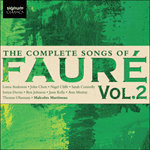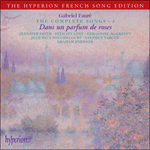
Welcome to Hyperion Records, an independent British classical label devoted to presenting high-quality recordings of music of all styles and from all periods from the twelfth century to the twenty-first.
Hyperion offers both CDs, and downloads in a number of formats. The site is also available in several languages.
Please use the dropdown buttons to set your preferred options, or use the checkbox to accept the defaults.

from notes by Graham Johnson © 2005
extrait des notes rédigées par Graham Johnson © 2005
Français: Hypérion
 Fauré: The Complete Songs, Vol. 2 Fauré: The Complete Songs, Vol. 2Malcolm Martineau brings together some of the UK’s finest singers for the second release in his series of the complete songs of Gabriel Fauré.» More |
 Fauré: The Complete Songs, Vol. 4 - Dans un parfum de roses Fauré: The Complete Songs, Vol. 4 - Dans un parfum de roses‘There are songs of a fragrance, ambiguity and vision unique to Fauré and all the singers involved in this glorious project, while not always in their ... ‘This completes Hyperion's recording of all Fauré's songs master-minded by Graham Johnson with a quintet of specialist singers: Jennifer Smith, Felici ...» More |

